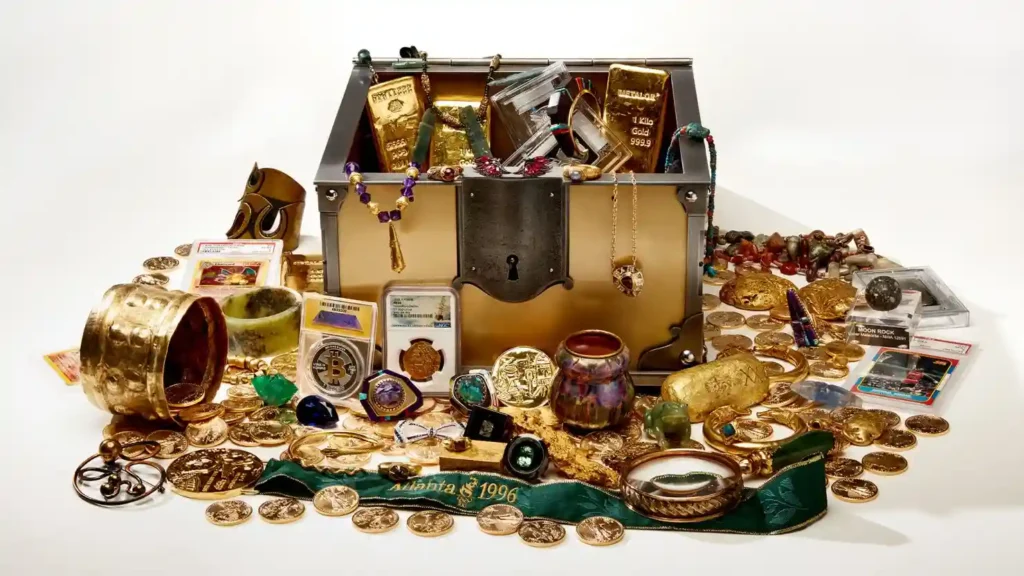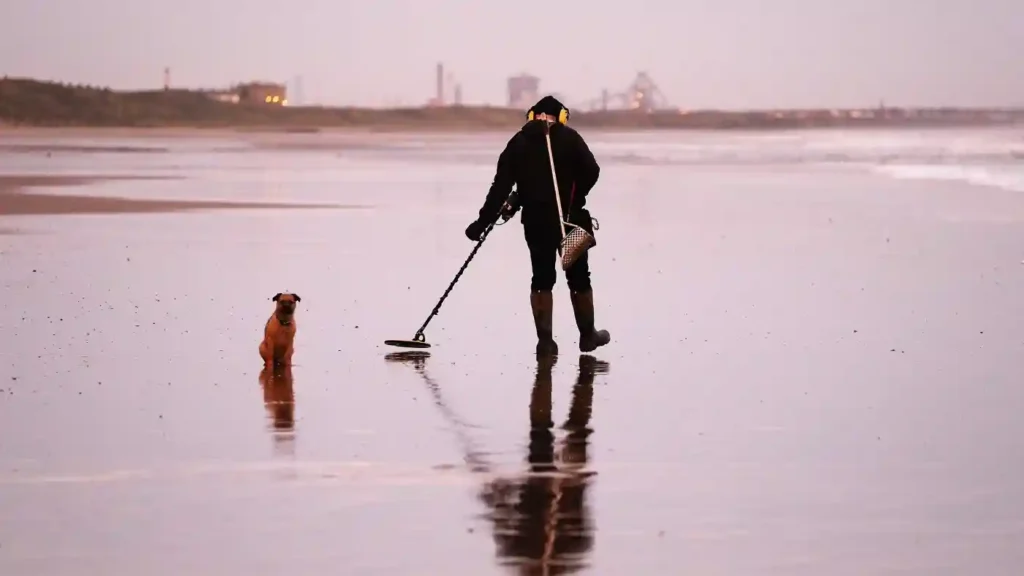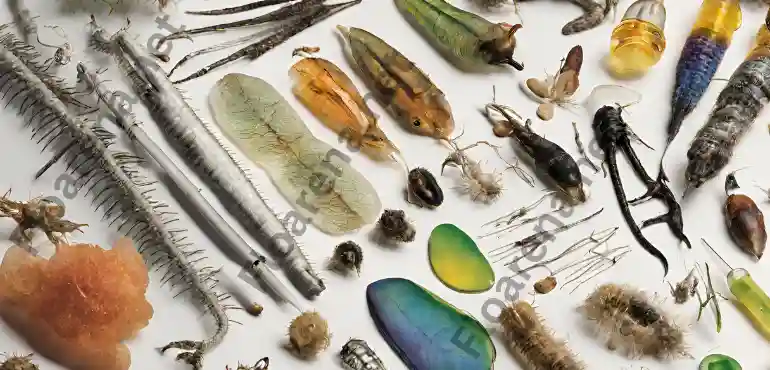A Treasure Trove Collection means old valuable things found together. People hid these items long ago. Nobody knows who owned them first.
These collections have gold, silver, coins, and jewelry. They tell us about people from the past. Each country has different rules about these finds.
Simple Facts About Treasure Trove Collection

- People buried these items on purpose
- The real owners are unknown
- Most items are made of gold or silver
- They help us learn about history
- Laws protect these discoveries
Why These Collections Matter
Treasure Trove collection are like history books. They show us how people lived before. We can see their art, money, and daily items.
Each piece tells a story. A coin shows what money looked like. A ring shows fashion styles. A pot shows cooking methods.
Laws About Treasure Finds

Rules in England
England has clear treasure laws. The Treasure Act 1996 sets the rules. People must report treasure finds to local officials.
What Counts as Treasure
- Gold and silver items over 300 years old
- Groups of coins from the same time
- Any prehistoric metal objects
- Items with historical importance
Reporting Rules
- Tell the Coroner about your find
- Report within 14 days
- Give exact location details
- Keep the items safe
- Wait for official decisions
Laws in Different Countries
Each country has its own rules. Some are strict. Others are more relaxed.
United States Rules
- Finders can usually keep treasures
- State laws are different everywhere
- Government land has special rules
- Some states claim all finds
Other Country Rules
- France claims most archaeological finds
- Germany has regional differences
- Italy protects cultural heritage strictly
- Australia has Aboriginal heritage laws
Famous Treasure Collections

The Staffordshire Hoard
This hoard was found in 2009. It has over 3,500 pieces of Anglo-Saxon gold. The items are about 1,300 years old.
The collection includes:
- Sword decorations
- Belt fittings
- Religious crosses
- Warriors’ equipment
The Frome Hoard
Found in Somerset, England in 2010. It contains 52,503 Roman coins. The coins date from 253 to 305 AD.
Key facts:
- Weighs about 160 kilograms
- Includes silver and bronze coins
- Shows 50 years of Roman history
- Now displayed in museums
Recent Amazing Finds
The California Gold Rush Hoard
A couple found this in 2013. They were walking their dog. The collection had 1,427 gold coins worth millions.
Details:
- Coins from 1847 to 1894
- Hidden in eight metal cans
- Buried under a tree
- Worth over 10 million dollars
The Ringlemere Cup
This Bronze Age gold cup was found in Kent. It dates back 3,500 years. Metal detector found it in a field.
Types of Items Found
Coins Tell Stories
Coins are the most common treasure items. They show rulers, dates, and places.
Roman Coins
- Denarii for daily shopping
- Aurei for big purchases
- Bronze coins for small items
- Silver coins for trade
Medieval Coins
- English pennies
- French deniers
- German pfennigs
- Italian florins
Jewelry Shows Fashion
Old jewelry reveals how people dressed. It shows wealth and status too.
Common Jewelry Types
- Rings for fingers
- Brooches for clothes
- Necklaces for necks
- Bracelets for arms
- Earrings for ears
Special Meanings
- Gold showed high status
- Silver was for middle class
- Bronze was for common people
- Gems showed extreme wealth
Daily Life Objects
Household items show normal life. They reveal cooking, eating, and working habits.
Kitchen Items
- Bronze cooking pots
- Silver serving dishes
- Iron knives and tools
- Clay storage jars
Personal Items
- Combs for hair
- Mirrors for appearance
- Pins for clothing
- Keys for locks
Weapons and Tools
These items show technology and warfare. They reveal how people fought and worked.
Fighting Weapons
- Swords for close combat
- Spears for distance fighting
- Axes for chopping
- Daggers for protection
Working Tools
- Hammers for building
- Saws for cutting wood
- Needles for sewing
- Scales for weighing
How People Find Treasures
Metal Detecting Hobby
Many people use metal detectors for fun. They search fields, beaches, and forests.
Best Places to Search
- Old farmland
- Near ancient roads
- Around old buildings
- Close to rivers
- On beaches after storms
Metal Detector Tips
- Get landowner permission first
- Learn your detector settings
- Dig carefully and fill holes
- Clean finds gently
- Record exact locations
Archaeological Digs
Professional archaeologists run organized searches. They use scientific methods.
Dig Methods
- Grid square mapping
- Careful layer removal
- Photo documentation
- Sample collection
- Site preservation
Team Work
- Directors plan the dig
- Students do manual work
- Specialists study finds
- Conservators preserve items
- Photographers record everything
Lucky Accidents
Some treasures appear by chance. Construction work often reveals hoards.
Common Discovery Ways
- Building new houses
- Farming activities
- Road construction
- Gardening work
- Natural erosion
Checking if Treasures are Real
Expert Examination
Specialists study finds carefully. They check age, materials, and style.
Testing Methods
- X-ray analysis
- Chemical testing
- Microscope examination
- Style comparison
- Historical research
What Experts Look For
- Metal composition
- Making techniques
- Wear patterns
- Age indicators
- Artistic style
Avoiding Fakes
Some people make fake treasures. They want to trick buyers and museums.
Warning Signs
- Too perfect condition
- Wrong metal types
- Modern tool marks
- Impossible combinations
- Suspicious sellers
Protection Tips
- Buy from trusted dealers
- Get expert opinions
- Check paperwork carefully
- Research similar items
- Ask detailed questions
Museum Collections
Major Museums Worldwide
Big museums display the best treasures. They educate millions of visitors yearly.
Top Treasure Museums
- British Museum in London
- Louvre Museum in Paris
- Metropolitan Museum in New York
- Egyptian Museum in Cairo
- National Museum in Athens
What Museums Show
- Historical timelines
- Cultural comparisons
- Artistic development
- Daily life examples
- Trade connections
Local Museums Matter
Small museums often have local treasures. They show regional history and culture.
Community Benefits
- Local pride building
- Tourist attraction
- Educational programs
- Research opportunities
- Cultural preservation
Taking Care of Treasure Trove Collection
Conservation Work
Old items need special care. Experts clean and preserve them carefully.
Common Problems
- Metal corrosion
- Fabric decay
- Crack development
- Color fading
- Structural weakness
Solution Methods
- Gentle cleaning
- Chemical stabilization
- Climate control
- Protective storage
- Regular monitoring
Storage Requirements
Treasures need perfect conditions. Temperature, humidity, and light matter greatly.
Ideal Conditions
- Stable temperature
- Low humidity
- Filtered air
- Minimal light
- Vibration control
Starting Treasure Hunting
Learning the Basics
New treasure hunters need education first. Laws, techniques, and ethics are important.
Essential Knowledge
- Local treasure laws
- Permission requirements
- Equipment operation
- Safety procedures
- Reporting obligations
Training Sources
- Metal detecting clubs
- Online courses
- Library books
- Museum programs
- Experienced mentors
Getting Equipment
Good equipment helps find more treasures. Quality tools last longer too.
Basic Equipment List
- Metal detector
- Digging tools
- GPS device
- Camera
- Notebook
- First aid kit
Equipment Tips
- Start with budget models
- Upgrade as skills improve
- Maintain tools properly
- Learn all settings
- Practice regularly
Following Rules
Responsible hunting protects heritage sites. It keeps the hobby legal and respected.
Good Practices
- Always get permission
- Report important finds
- Respect private property
- Share knowledge freely
- Help beginners learn
Avoiding Problems
- Never trespass
- Don’t damage land
- Follow local laws
- Keep accurate records
- Join recognized groups
Technology Helps Hunting
Modern Detection Tools
New technology finds deeper treasures. It also identifies metals better.
Advanced Features
- Multiple frequency scanning
- Target identification
- Depth estimation
- Ground balancing
- Wireless headphones
Digital Improvements
- GPS mapping
- Digital photography
- Database recording
- Online research
- Social media sharing
Future Technology
Tomorrow’s tools will be even better. Science keeps improving detection methods.
Coming Innovations
- Smartphone integration
- Artificial intelligence help
- Satellite imagery use
- Underground mapping
- Automatic identification
Making Money from Treasures
Legal Treasure Sales
Some treasures can be sold legally. Rules vary by country and item type.
Sale Requirements
- Proper ownership proof
- Legal finding documentation
- Expert authentication
- Market value assessment
- Tax obligation compliance
Sale Methods
- Auction houses
- Private collectors
- Museum sales
- Online platforms
- Dealer networks
Value Factors
Treasure value depends on many things. Rarity and condition matter most.
Price Influences
- Historical importance
- Metal content
- Artistic quality
- Condition state
- Market demand
Education and Research
Learning from Treasures
Each find teaches us something new. Research reveals historical secrets.
Research Benefits
- Dating civilizations
- Understanding trade
- Revealing beliefs
- Showing technology
- Connecting cultures
Study Methods
- Scientific analysis
- Historical comparison
- Cultural context
- Artistic study
- Archaeological dating
Sharing Knowledge
Museums and schools use treasures for teaching. They inspire young learners.
Educational Uses
- History lessons
- Art classes
- Science demonstrations
- Cultural studies
- Archaeological training
Problems and Solutions
Common Issues
Treasure hunting faces several challenges. Understanding them helps solve problems.
Main Problems
- Illegal treasure hunting
- Site damage
- Unreported finds
- Fake treasures
- Property disputes
Working Solutions
- Better education
- Stricter enforcement
- Reward systems
- Authentication services
- Clear legal frameworks
Future Challenges
New problems keep appearing. Technology and globalization create issues.
Emerging Issues
- Internet fraud
- International smuggling
- Digital documentation
- Climate change effects
- Urban development pressure
Regional Treasure Traditions
European Treasures
Europe has the longest treasure hunting history. Many laws developed there first.
Famous European Finds
- Celtic torcs
- Roman hoards
- Viking silver
- Medieval coins
- Renaissance jewelry
American Discoveries
The Americas have different treasure types. Native cultures and colonial history mix.
Notable American Treasures
- Spanish colonial silver
- Native American artifacts
- Civil War relics
- Gold rush finds
- Pirate treasures
Asian Collections
Asia holds some of the world’s oldest treasures. Ancient civilizations left rich hoards.
Important Asian Finds
- Chinese jade collections
- Japanese sword hoards
- Indian temple treasures
- Persian royal items
- Silk Road trade goods
Community Impact
Local Benefits
Treasure finds help local communities. They bring tourism and pride.
Community Advantages
- Museum development
- Tourist attraction
- Job creation
- Cultural identity
- Educational opportunities
Social Responsibility
Treasure hunters should help their communities. Sharing knowledge benefits everyone.
Ways to Help
- Donate duplicate finds
- Support local museums
- Teach young people
- Preserve historical sites
- Document local history
Conclusion
Treasure Trove Collection fascinate people worldwide. They connect us to our ancestors and their stories. Finding treasures requires knowledge, patience, and respect for laws. Good hunters follow rules and share discoveries appropriately. These collections will continue inspiring future generations. They remind us that history lies buried beneath our feet, waiting for discovery. Whether you hunt treasures or just enjoy learning about them, remember their true value lies in the knowledge they provide about human civilization. Start your treasure journey today. Learn the laws, get proper training, and respect our shared heritage. The next great discovery might be waiting for you.






